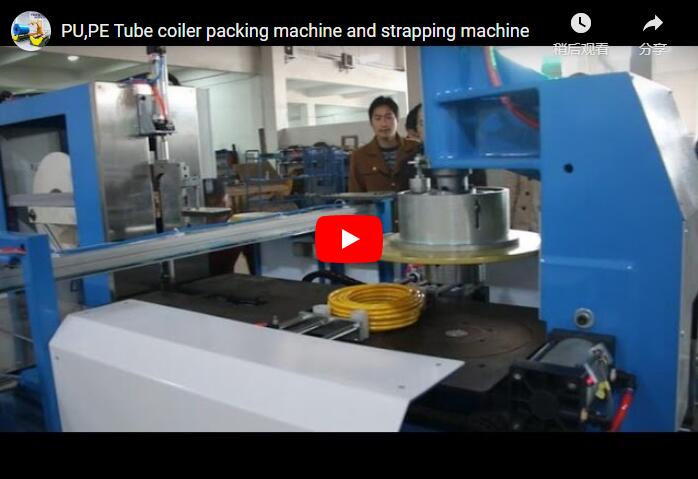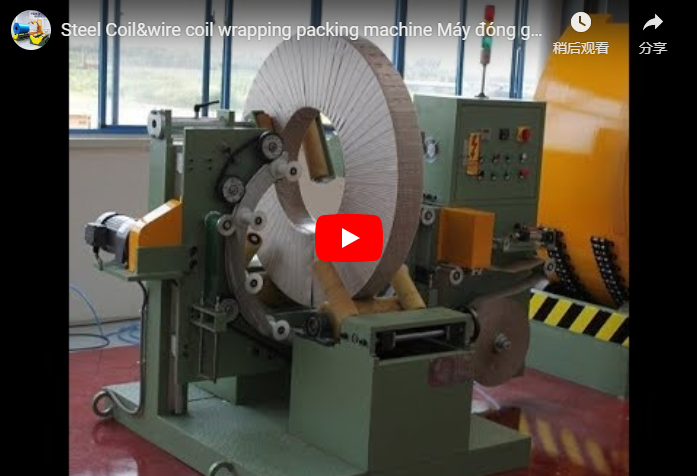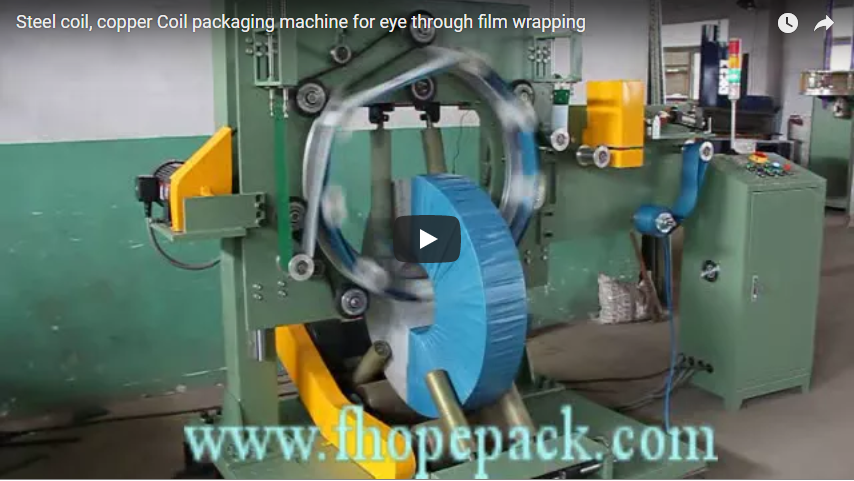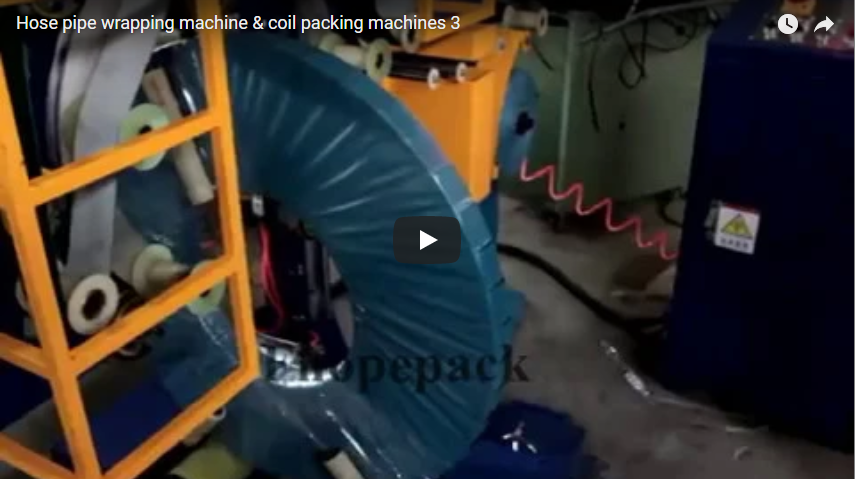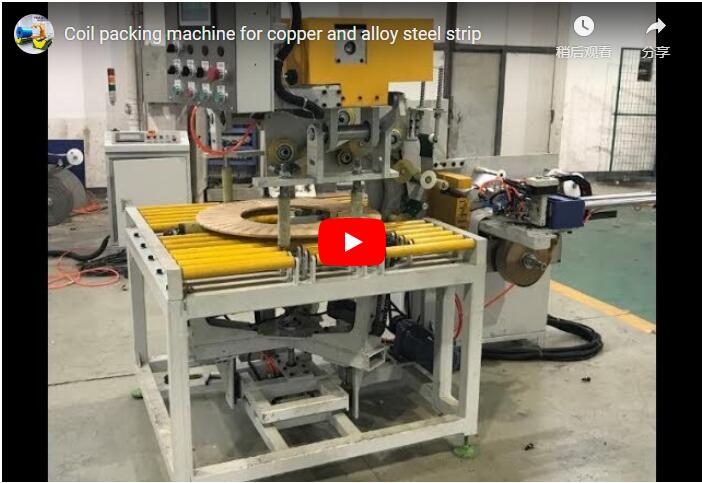Streamlining Small Coil Logistics: An In-Depth Look at Automated Coil Packing Technology
Handling and packaging small steel coils presents unique challenges in the metal fabrication and distribution landscape. Ensuring product integrity, optimizing labor, and maintaining throughput demand efficient solutions. Manual or semi-automated methods can often lead to inconsistencies, potential product damage, and safety concerns. This automated steel coil packing machine addresses these issues directly, providing a robust solution specifically engineered for smaller coil dimensions, enhancing downstream handling, storage, and transportation.
Operational Efficiency Through Automated Wrapping
This specific system is designed to process steel coils with outside diameters reaching up to 36 inches (914 mm) and weights up to 1 metric ton (2204 lbs). The core function revolves around applying protective layers of wrapping material—typically paper and stretch film—followed by secure taping, creating a tightly bound, unitized load.
The process sequence, refined through operational experience and drawing parallels with established packaging patents focusing on orbital wrapping mechanisms (e.g., concepts seen in patents related to film tension control and dispenser design), typically follows these steps:
- Loading & Positioning: Small steel coils are loaded onto integrated coil supports or conveyed into the wrapping station. Adjustable guides or centering arms ensure the coil is precisely positioned for optimal wrapping coverage. Some systems incorporate sensors, akin to those described in industrial automation research papers, to automatically detect coil dimensions for adaptive wrapping cycles.
- Paper Application: A roll of protective paper (kraft paper, VCI paper for corrosion inhibition, or other specified types) is automatically fed beneath the coil. Padded rollers or a shuttle mechanism then wrap the paper circumferentially around the coil OD and through the eye. Adhesive application systems may be integrated for securing the paper's leading and trailing edges. The use of appropriate paper layers addresses abrasion protection, a critical factor highlighted in metal handling best practices guides.
- Stretch Film Overwrapping: Following the paper layer, stretch film (typically LLDPE) is applied using a similar orbital wrapping process. Advanced systems feature precisely controlled pre-stretch capabilities, maximizing film yield and containment force, consistent with findings in packaging efficiency studies. This layer provides moisture resistance, unitization, and further protection against contaminants.
- Securing: Integrated tape dispensers apply adhesive tape circumferentially or radially to secure the film tail and reinforce the bundle, preventing unraveling during transit. Some configurations might incorporate steel or PET strapping units for higher-security applications.
- Discharge: The fully wrapped and secured coil is then automatically ejected or conveyed out of the machine, ready for labeling and shipping.
Key Features and Technical Considerations
Adopting technology described in publications like The Fabricator often involves evaluating specific machine capabilities:
- Coil Handling Capacity:
- Maximum Outer Diameter: Up to 36 in. (914 mm)
- Maximum Coil Weight: Up to 1 Metric Ton (2204 lbs)
- Note: Specific ranges can vary based on machine configuration.
- Wrapping Materials: Compatibility with various materials:
- Kraft Paper
- VCI (Volatile Corrosion Inhibitor) Paper
- LLDPE Stretch Film (various gauges)
- Woven materials or other protective layers (depending on configuration)
- Control System: Typically utilizes Programmable Logic Controllers (PLCs) with Human-Machine Interfaces (HMIs) for:
- Storing wrapping recipes for different coil sizes/types.
- Adjusting film/paper tension.
- Controlling rotational and wrapping speeds.
- Diagnostics and troubleshooting.
- Construction: Heavy-duty steel frame designed for industrial environments, ensuring longevity and stability, a common requirement emphasized in equipment reviews found in trade magazines.
- Automation Level: Fully automated cycles minimize operator intervention, enhancing safety and consistency. Integration with existing conveyor lines is often possible.
Benefits in Metal Processing and Distribution
Automating the small coil packing process yields significant advantages, aligning with industry trends focused on LEAN manufacturing and operational excellence:
- Enhanced Product Protection: Consistent, tightly applied layers minimize the risk of scratches, dents, moisture ingress, and edge damage during handling and shipping, directly reducing costly damage claims. The application of VCI materials offers scientifically proven corrosion protection during storage and transit, as documented in numerous material science papers.
- Improved Safety: Automating the wrapping process reduces manual handling of heavy or awkward coils and eliminates repetitive motions associated with manual wrapping, mitigating ergonomic risks.
- Increased Throughput: Automated cycles are significantly faster and more consistent than manual methods, increasing overall packaging line productivity. Cycle times can be optimized based on coil size and wrapping requirements.
- Labor Optimization: Reduces the manual labor required for packing, allowing personnel to be reallocated to higher-value tasks.
- Material Efficiency: Precise control over material application and tension, particularly film pre-stretch, minimizes material consumption and waste compared to manual techniques.
- Professional Package Presentation: Uniformly wrapped coils present a more professional appearance to end customers, enhancing brand perception.
Meeting the Demands of Modern Logistics
This automated packing machine provides a technically sound and economically viable solution for businesses handling significant volumes of small steel coils, including manufacturers, service centers, distributors, and logistics providers. Its robust construction, combined with programmable controls and material versatility, ensures reliable performance and adaptability to specific packaging needs. By addressing critical factors like product protection, operational efficiency, and worker safety, this technology represents a valuable investment for streamlining the coil logistics chain.
For further information on automated wrapping solutions:
Coil Packing Machine, coil wrapping machine | FhopePack
info@fhopepack.com

